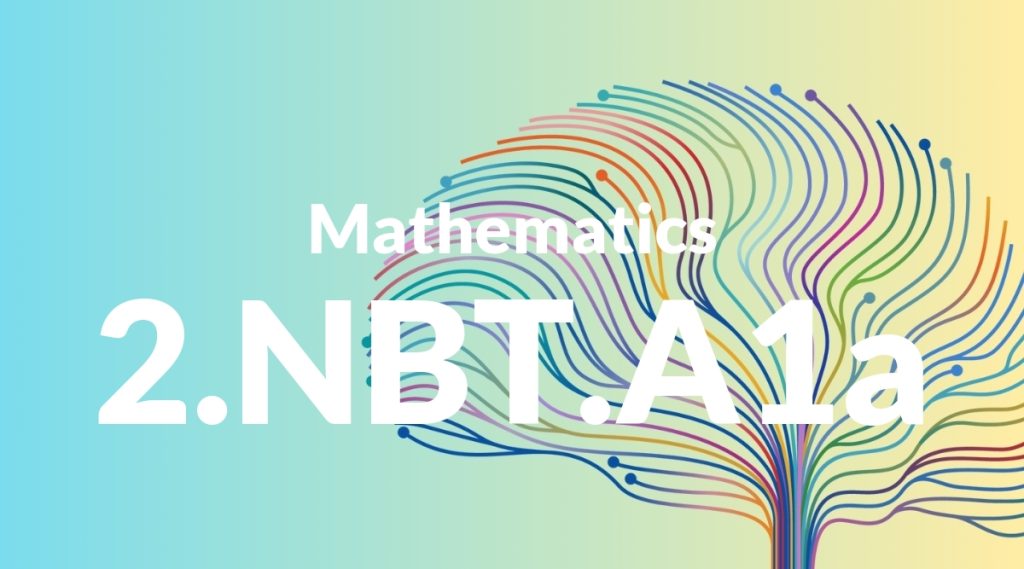Standard: 2.NBT.A1 – Understand that the three digits of a three-digit number represent amounts of hundreds, tens, and ones; e.g., 706 equals 7 hundreds, 0 tens, and 6 ones. Understand the following as special cases:
Grade level: Grade 2
Subject: Mathematics
Domain: Number & Operations in Base Ten
Teacher Overview
This standard helps students understand that each digit in a three-digit number represents a different place value: hundreds, tens, and ones. This foundational understanding is crucial for performing arithmetic operations and solving real-world problems involving larger numbers. Students should be comfortable with place value concepts up to two-digit numbers and basic counting, addition, and subtraction skills.
After mastering this standard, students will move on to more complex arithmetic involving three-digit numbers, including addition and subtraction with regrouping, and will be better prepared to tackle larger numbers in future grades.
Common Misconception 1
Some students may incorrectly assume that a digit’s value remains the same regardless of its position. For example, they might think that the ‘7’ in 706 is the same as the ‘7’ in 76.
Intervention 1
Use place value charts and base-ten blocks to visually demonstrate how the value of a digit changes with its position. Reinforce this through hands-on activities and repeated practice.
Common Misconception 2
Students might misunderstand the role of zero in a number, thinking it has no value regardless of its position.
Intervention 2
Provide numerous examples and non-examples to illustrate how zero functions as a placeholder. Use visual aids and interactive activities to reinforce this concept.
Prerequisite Knowledge
Students should have a solid understanding of place value for one- and two-digit numbers, including recognizing tens and ones. They should also be able to count to 100 and understand basic addition and subtraction.
Subsequent Knowledge
Students will be able to perform more complex addition and subtraction involving three-digit numbers, understand the concept of regrouping, and apply place value understanding to solve real-world problems involving larger numbers.
Instructional Activities
- Use base-ten blocks to build and break down three-digit numbers.
- Create and solve place value riddles with peers.
- Play place value games using cards or dice.
- Write three-digit numbers in expanded form and standard form.
- Sort and compare three-digit numbers using place value charts.




